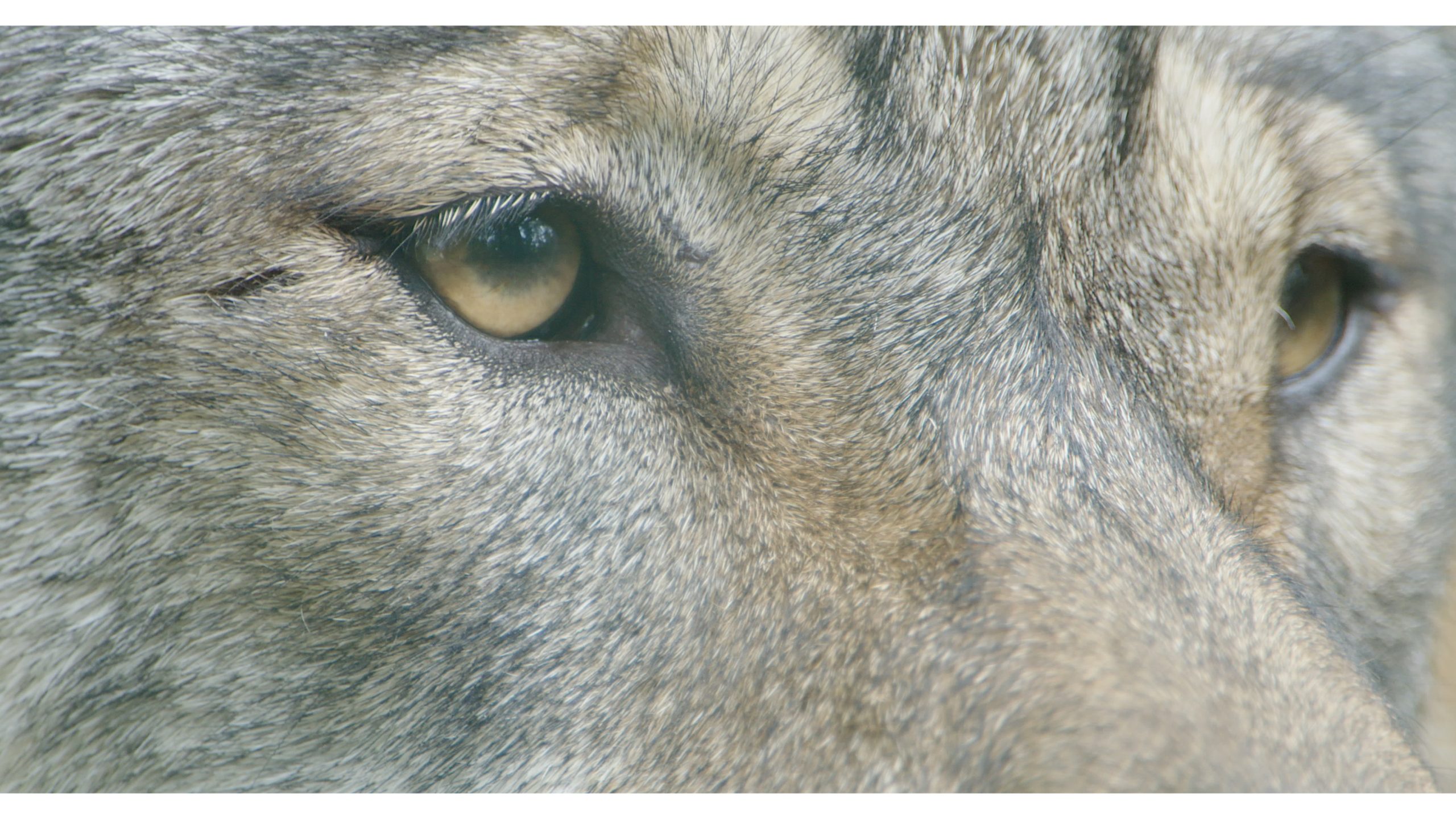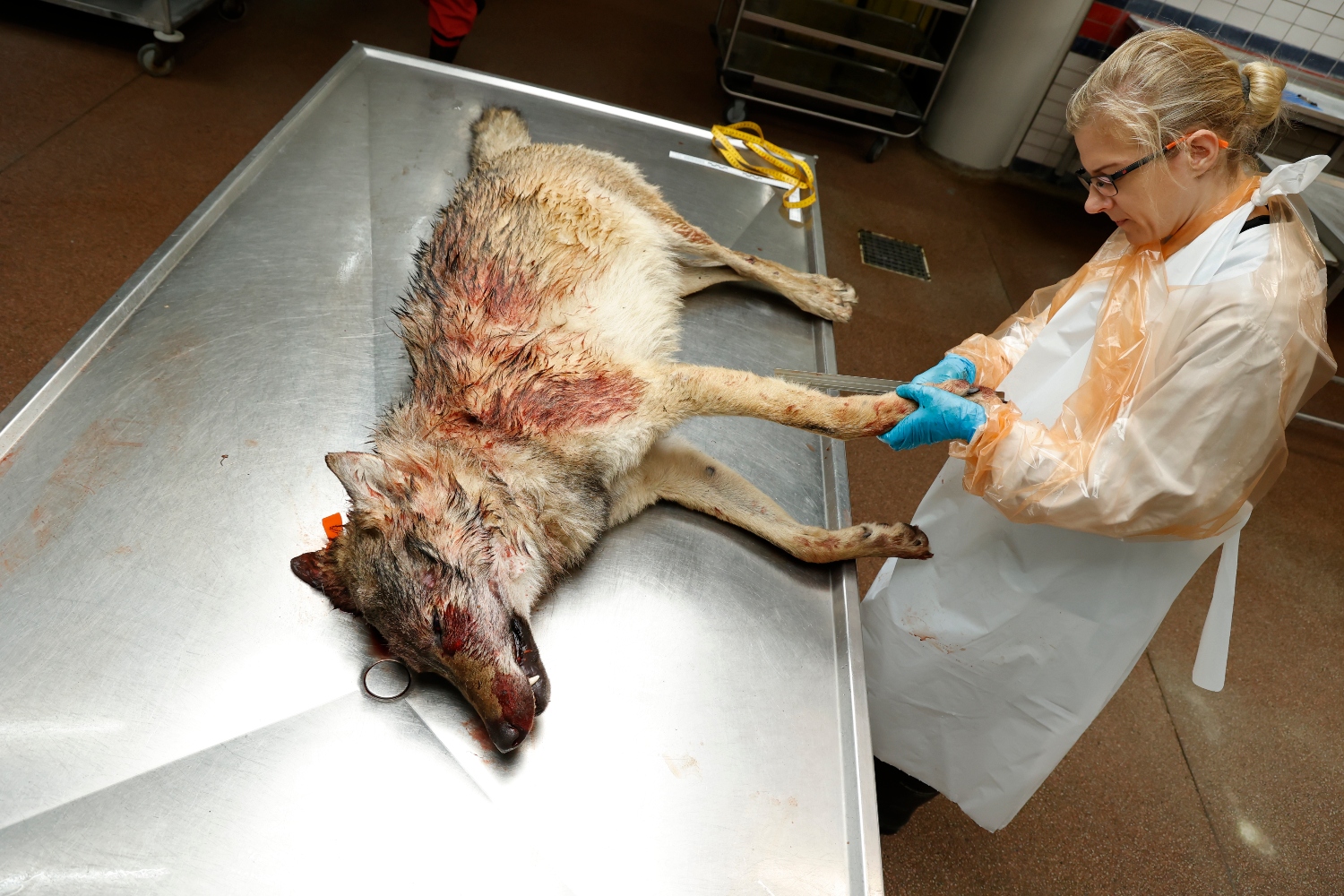Two weeks ago, animal ecologist Hugh Jansman arranged a special screening of the film Wolf for a WUR audience at the Heerenstraat theatre, with the maker of the film Cees van Kempen. A home game for the wolf.
‘My spontaneous reaction was: how cool that the wolf is back in the Netherlands,’ says cultural geographer Maarten Jacobs a few days later. ‘But then again, that’s what I thought before seeing the film.’ Animal ecologist Jansman is also full of praise. ‘The footage Van Kempen has managed to obtain in five years, of an animal that you only get rare glimpses of, is impressive. And he also manages to put together a good story with that footage. It’s extraordinarily clever.’
The film could do a lot of good for wolf support
The film draws the viewer into the story of a young wolf who leaves his pack, moves west and settles in the Netherlands. ‘Wolf is a romantic portrayal of a wolf’s life,’ says Jacobs. ‘And it’s a success, as far as I am concerned. I got emotionally involved with the wolf as I watched. I think the film can do a lot of good for support for this animal from the average viewer because they can empathize with what it’s like to be a wolf.’ Jansman agrees. ‘But the question, of course, is who is going to see the film,’ he says. ‘Viewers will undoubtedly gain a better understanding of the wolf, how it lives and what dilemmas the animal faces. But the question is whether opponents of the wolf will go to see the film too. I doubt it, frankly.’
Social conflict
And even if they do see the film, Jacobs doesn’t think it will win over opponents of the wolf. He puts that down to the way the wolf has become part of identity politics. ‘The wolf has got caught up in existing antagonisms and polarization, such as the conflict between city and countryside, between citizen and farmer. And more generally, the polarization between the elite and the people who feel they no longer belong. For this identity politics and polarization, you need ammunition, fuel to feed the flames of conflict. The wolf is the perfect fuel for the purpose, and that has changed the dynamics.’
The wolf has got caught up in existing antagonisms and polarization
‘The issue is no longer between support for the wolf or fear of the wolf, but an ongoing social conflict. If opponents of the wolf see the film at all, they will mainly home in on things that fit their viewpoint. After all, that’s what you do when you polarize. You see, the wolf eats deer and wild boar, it’s a predatory animal.’
‘The wolf always comes off badly in fairy tales,’ says Jansman. ‘We fear the unknown. Most people have no idea how dependent we are on nature. The wolf belongs here, it’s as simple as that. If there is one lesson we ecologists have learnt over the past century, it is this: wolves and other large predators are of great importance in maintaining populations of ungulates. In this country, we don’t see that ecological significance at the moment. Partly just because it has not yet been studied, but also because the influence of humans here is far greater than that of the wolf. Research elsewhere does show the effects clearly: the wolf plays a major role in the behaviour of other animals.’
One such effect is shown in the film. Jacobs goes so far as to call it an eye-opener. For fear of the wolf, grazing deer tend to avoid fallen trees. ‘They don’t want to graze there anymore because they don’t have a good view of the surroundings. This fear gives saplings a chance to sprout and grow. The mini-ecosystem around such a fallen tree changes as a result. It is nice that you get an insight like that in story form. That sticks.’
Wolf packs
The first wolf settled in the Netherlands in 2019. And at the last count, according to Hugh Jansman, there were at least 30 wolves. The bulk of them live in four packs: three in the Veluwe and one on the border of Drenthe and Friesland. The largest pack is the one that settled in 2019. Having given birth to pups several years in a row, the pack includes yearlings and consists of more than 10 wolves. In addition to the packs, loners roam around who have settled somewhere to start their own packs, or are about to do so. Balancing out the influx, there have been 11 (investigated) casualties so far. One of these is known to have been shot, while the others were killed by traffic. One wolf was run over, but survived.

 A still from the film Wolf by Cees van Kempen. Photo Holland the Film
A still from the film Wolf by Cees van Kempen. Photo Holland the Film 

